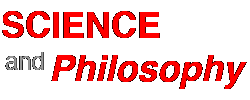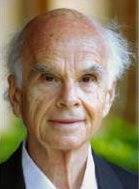Laszlo suggests we think of matter as patterned “knots” of energy in space-time where the smooth flow has been disturbed by electromagnetic forces. “Things” emerge from the background of flows like knots tied on a fishing net.
There are a vast number of such knots throughout the reaches of space-time. They are not isolated units but parts of a continuum, and they communicate with one another through attraction and repulsion.
Some of the elementary units achieve cohesion in balancing the energy flows that constitute them and form a pattern. They constitute “super-knots” of a much more complex kind. The material universe becomes a vast system of balanced energies.
The patterns become complex; there is an emerging hierarchy. For example, electrons and nucleons are condensations of energies in space-time field… They are capable of integration into balanced structures: atoms... [that are] capable of forming bonds with neighboring atoms. We thus get chemical molecules. Electronic bonding permits the formation of complex polymer molecules and crystals. Under favorable conditions, the level of organization reaches heavy organic substances, such as protein molecules and nucleic acids. Now there are the basic building blocks for self-replicating units of still higher organizational level: cells. These systems may achieve coordination with others, and we are on our way toward multicellular phenomena. The organic systems themselves, define the supraorganic community. Ultimately we reach the level of the global system.
This systems within systems view of the world allows us to understand that man is one species of system in a complex and embracing hierarchy of nature. Seeing himself as a connecting link in a complex natural hierarchy cancels man’s anthropocentrism, but seeing the hierarchy itself as an expression of self-ordering and self-creating nature bolsters his self-esteem and encourages his humanism.
We are concrete embodiments of cosmic processes. Our knowledge has made us increasingly autonomous in nature, and enabled us to create the worlds of culture. It has freed us from many of the bonds of biological existence and given us license to determine our own evolution. But the possibility of error is the price we pay for freedom.
Immersed in the immense hierarchies of the biosphere, we are nevertheless masters of our destiny, for we have enormous control capabilities. The supreme challenge of our age is to specify, and learn to respect, the complex and delicately balanced hierarchic order that is both in us and around us. A systems philosophy is the only way to make sure that we achieve a culture that is viable and humanistic.


